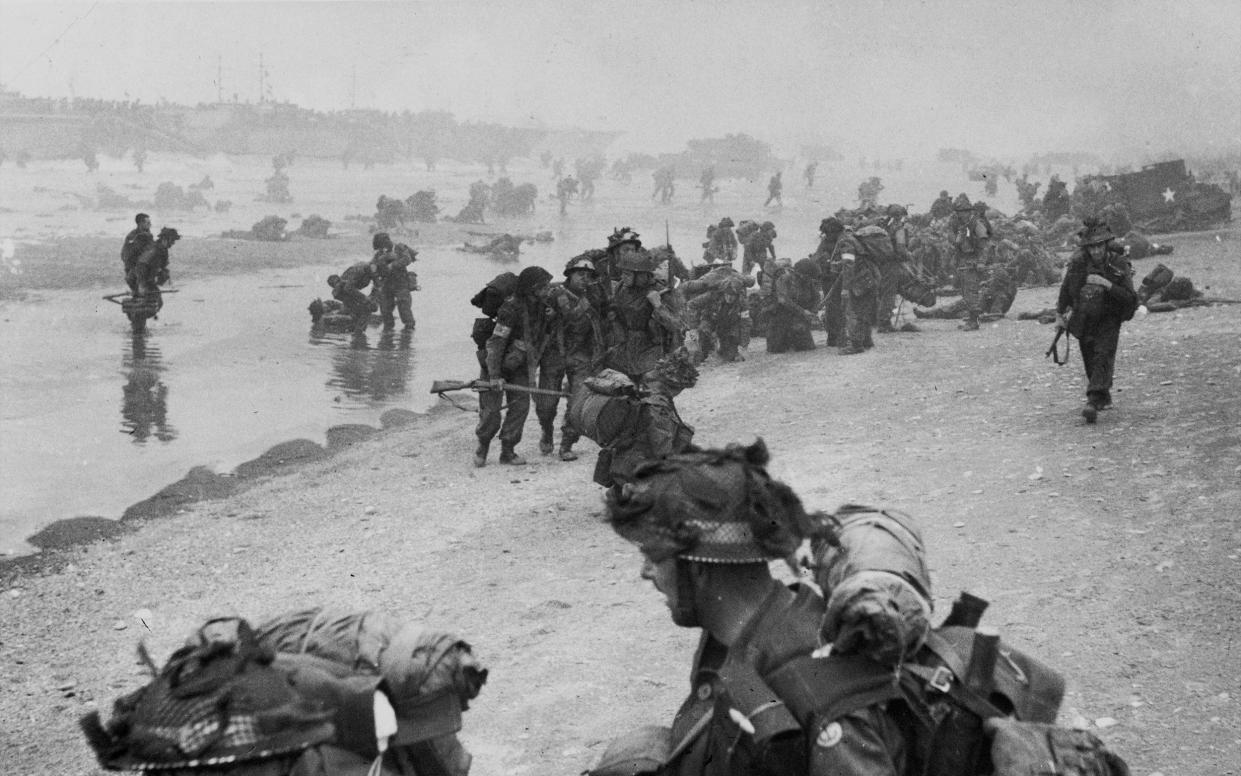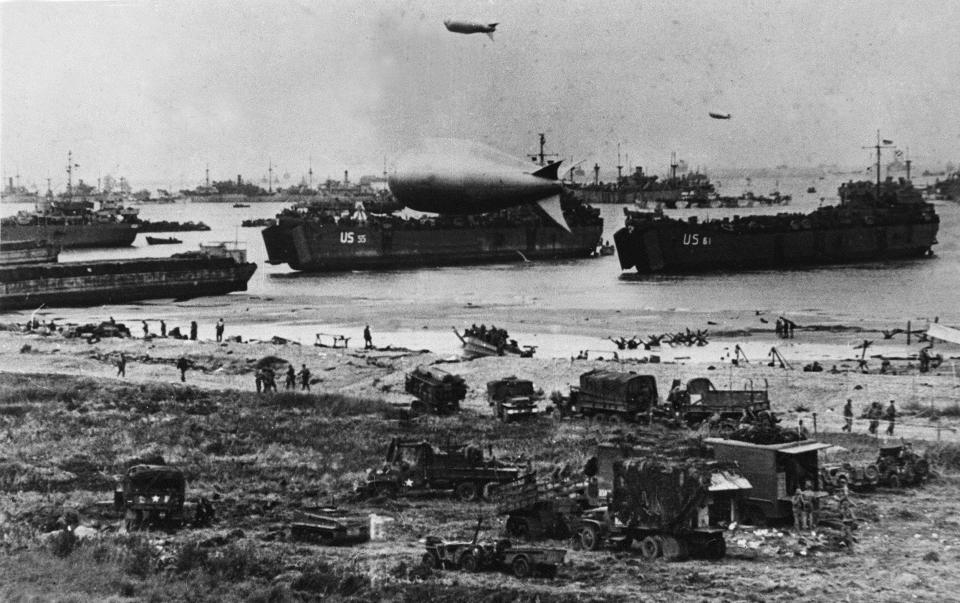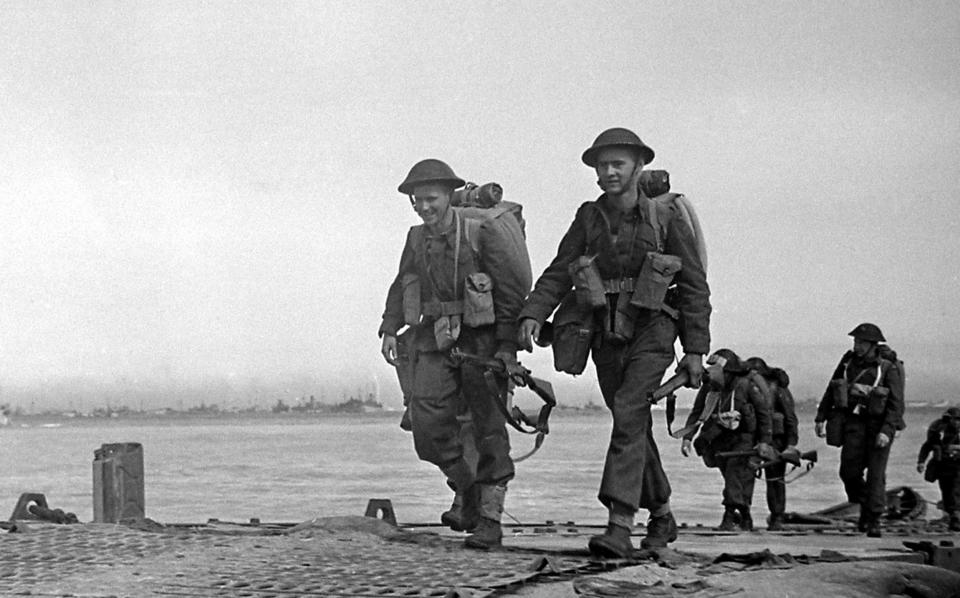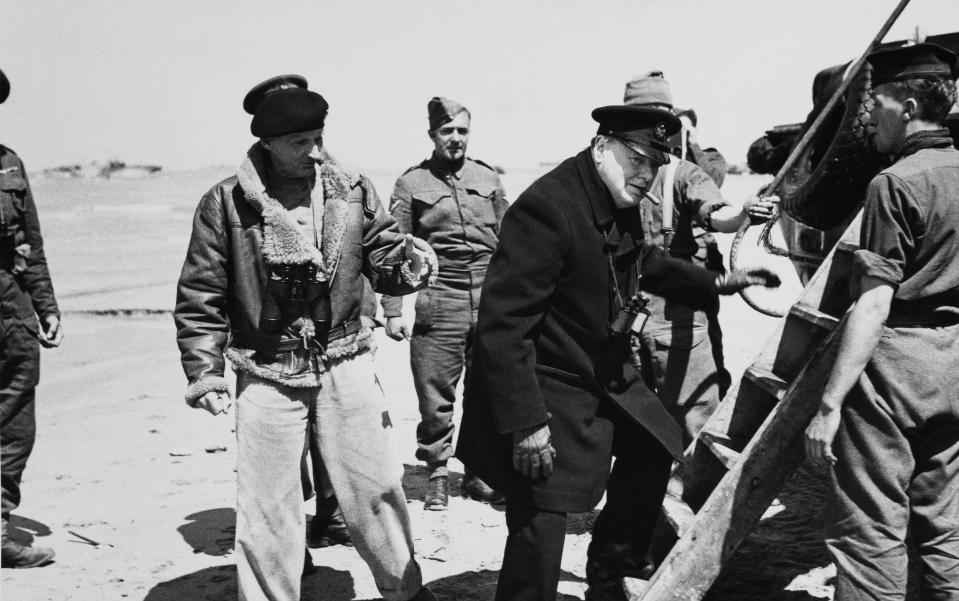D-Day at 80: The best new history books

Early on Tuesday June 6 1944, an armada crossed the English Channel to deposit an army consisting almost entirely of Britons, Americans and Canadians on five beaches on the Normandy coast. By that time, an airborne force of paratroopers had landed in German-occupied territory, aiming to draw the fire of those who would try to slaughter the armies coming up the beaches. According to figures in Churchill’s D-Day, by Lord Dannatt and Allen Packwood (★★★★), one of several books published to mark the anniversary of the invasion, on D-Day itself “over 5,000 ships had landed 133,000 Allied troops, supported by 14,674 air sorties and immense naval gunfire”.
Among the 20,000 airborne troops, according to Dannatt and Packwood, casualties were “small”; but of the initial ground force, which eventually swelled to nearly a million and a half men, “there were just under 11,000 Allied casualties, including around 3,800 killed, of which slightly over 1,000 were British”. On that first day, the Americans suffered a disproportionate number of dead, thanks to the carnage on Omaha Beach, from which the surrounding cliffs provided little means of advance.
The first notable D-Day chronicle was Cornelius Ryan’s The Longest Day, published in 1959. (It was made into a film memorable for a truly preposterous turn by John Wayne as a wounded American commander.) The shelves of military historians, and those with an amateur interest in the question, now creak with 65 years’ worth of books about the invasion of Normandy. Many have made contributions to our knowledge, thanks to the greater availability of state archives and private collections, and in detailing such an operation as the invasion, greater and more formidable in its execution than anything the world had seen, there are plenty of angles to be had. How interesting they are, and how keen the reading public’s appetite remains for another round of D-Day books, is another matter.
Dannatt and Packwood’s book is well judged and well resourced, and one of the better of the latest crop. Dannatt is a former Chief of the General Staff, and brings a soldier’s expertise to the technical digressions in the narrative; Packwood is director of the archive at Churchill College, Cambridge, which includes the wartime prime minister’s papers. He is well aware of the distinction between the familiar and the less familiar. The book is candid in dealing with Churchill’s comparative impotence in the build-up to D-Day: his realisation not just that he was a junior partner in the Western alliance with Roosevelt, but that his military commanders were increasingly calling the shots. Concerned about how to get equipment across the Channel, he was angered when he heard decisions had been taken by Montgomery without consulting him. It brought home Churchill’s lack of absolute power.
From the familiar material comes the old story about Churchill’s absurd determination to join the armada, and the equal determination of George VI to go, too. Each thought it impossible the other could go; “Tommy” Lascelles, the King’s private secretary, was horrified, wondering aloud who would advise the 18-year-old Princess Elizabeth, who would have become Queen, on whom to appoint prime minister if both the King and Churchill were killed. (In the event, both visited several days after the successful invasion.) Churchill’s petulance and the sometimes impossible demands he made on his court are also familiar. But for new readers, the book will be a superb primer – and one of impeccable historical accuracy – on the events around D-Day.

D-Day was mainly a seaborne operation, and that underplayed story is well told in Nick Hewitt’s Normandy: The Sailors’ Story (★★★★★). Commendably, he denies that his book is yet another about D-Day, but about “the Battle of Seine Bay” from mid-1943 to late 1944, which established something approaching Allied naval superiority off the Normandy coast, and made the landings possible. For a year before D-Day, the armada had to be put together, with many ships having to be brought across the Atlantic.
Hewitt’s technical knowledge is exemplary. But as he also points out, after nearly five years of war it was harder to get sailors than vessels. Many of the former were transferred from duties ashore, their jobs filled by Wrens. The demands were varied. There was a shortage of officers. “At this point, ludicrously,” Hewitt writes, “the Service sent them to the Royal Naval College at Greenwich for a short course on Wardroom etiquette, known disparagingly as the ‘knife and fork’ course.” Once they were there, a commander came in and said: “You have become officers. We are now going to teach you how to be gentlemen.”
Hewitt gives a superb account of the disastrous invasion rehearsal by the Americans in Lyme Bay, off the Dorset coast, in late April 1944. The rehearsal’s Royal Navy escort was reduced by a destroyer’s being holed in a collision, and with its replacement never having caught up. Just after midnight on April 28, a flotilla of E-boats on a routine patrol from Cherbourg slipped past the escort and hit one of the American ships. One of the survivors, quoted by Hewitt, recalled that “all hell broke loose… those out in the open were in total panic and many were falling to the deck hit by what seemed to be incoming fire… it felt like an earthquake”. Two other American vessels were hit within minutes: a total of 749 were killed and another 200 wounded. As Hewitt writes, on the eve of D-Day, the Kriegsmarine remained far more of a threat to the Allied invaders than had been realised.

There are excellent details, and maps, of the vast flotilla assembled in the Solent in early June, and accounts of how the crossing was made after a 24-hour delay for bad weather. “It was a real filthy night,” one of the sailors Hewitt quotes recalled. “Choppy seas, squally showers, really overcast… when we got back to Plymouth, I’d been at sea on duty for 30 hours without a break. They called it the Longest Day. It was for me.” Minesweepers had cleared a channel in and out of the landing beaches, enabling the transport ships to get in, unload their cargoes, and get out again.
Hewitt stresses the sheer size of the operation. Although deception techniques such as Operation Mincemeat, when a corpse was washed up on a Spanish beach with bogus plans for the invasion, had convinced the Germans that the invasion would take place in the Pas-de-Calais, and although Rommel was convinced the weather was too bad for an attempt in early June, the fact that it was carried out with as little loss of life and materiel as it was appears nothing short of miraculous.
Also highly original is Christian Wolmar’s The Liberation Line (★★★★); though it is not, strictly speaking, a book about D-Day. Wolmar, a respected transport historian, tells the story of British and American engineers imported into liberated France to rebuild the railways essential to the progress of the invasion and the recovery of the country. Those who endure modern railways will wonder at the fact that a new line from Avranches to Le Mans – a distance of 135 miles – was knocked up in just 75 hours in August 1944.

The mechanics of D-Day required years of scientific development; the stories of some of these are told in Rachel Lance’s Chamber Divers (★★★★). Lance looks at the importance of underwater reconnaissance to operation, obvious since the catastrophe of the Dieppe raid in 1942. D-Day is usually thought to be entirely about men: but Lance’s book highlights the role female scientists played. One, Elizabeth Jermyn, was paid the same as a secretary and fractured her spine in an experiment – another reminder that in both world wars, victory came only because of the contribution of women.
But it was men who went to Normandy and landed on the beaches. First-person accounts of these astonishingly brave warriors are told in two books, and are vital testimony for those who wish to understand the stark reality of running up a beach with the Wehrmacht trying to kill you. D-Day: The Unheard Tapes (★★★★), by Geraint Jones, uses interviews collected in an oral-history project by British and American scholars; a new BBC documentary adapts some of them for the screen. D-Day: The Oral History (★★★★), by Garrett M Graff, is more comprehensive, running accounts from a larger and wider range of witnesses on both sides.
One understands the heroism well when one reads this account of Lord Lovat’s brigade, reproduced in Graff’s book: “They stride forward with shoulders hunched like boxers ready for in-fighting. Shells explode among them. Their leader falls, but they shoulder him upright and surge on. Never can any nation have given birth to finer men than these.” For such good reasons, 80 years later their legend lives on.
To order any of these books, call 0808 196 6794 or visit Telegraph Books

